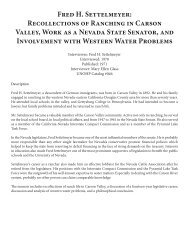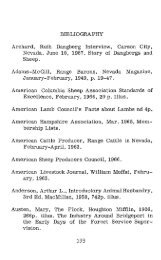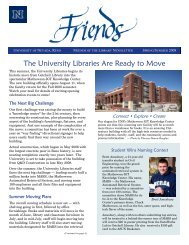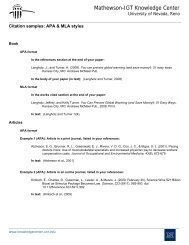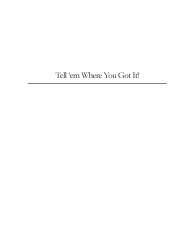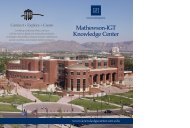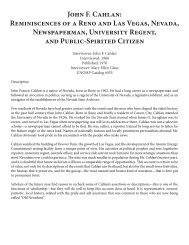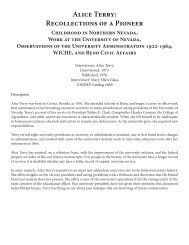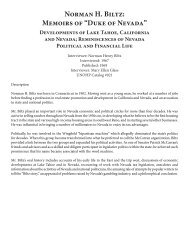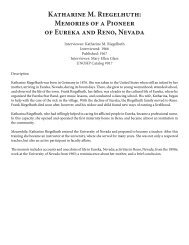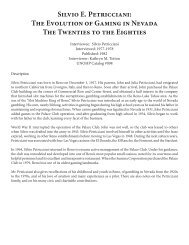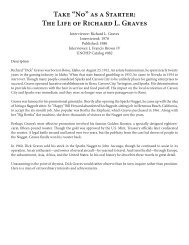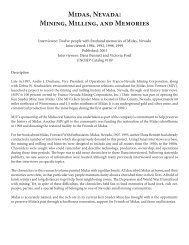Joseph P. Mosconi - University of Nevada, Reno
Joseph P. Mosconi - University of Nevada, Reno
Joseph P. Mosconi - University of Nevada, Reno
You also want an ePaper? Increase the reach of your titles
YUMPU automatically turns print PDFs into web optimized ePapers that Google loves.
Original Preface<br />
The <strong>University</strong> <strong>of</strong> <strong>Nevada</strong> Oral History<br />
Program (OHP) engages in systematic<br />
interviewing <strong>of</strong> persons who can provide<br />
firsthand descriptions <strong>of</strong> events, people and<br />
places that give history its substance. The<br />
products <strong>of</strong> this research are the tapes <strong>of</strong> the<br />
interviews and their transcriptions.<br />
In themselves, oral history interviews<br />
are not history. However, they <strong>of</strong>ten contain<br />
valuable primary source material, as useful in<br />
the process <strong>of</strong> historiographical synthesization<br />
as the written sources to which historians have<br />
customarily turned. Verifying the accuracy <strong>of</strong><br />
all <strong>of</strong> the statements made in the course <strong>of</strong> an<br />
interview would require more time and money<br />
than the OHP’s operating budget permits. The<br />
program can vouch that the statements were<br />
made, but it cannot attest that they are free<br />
<strong>of</strong> error. Accordingly, oral histories should<br />
be read with the same prudence that the<br />
reader exercises when consulting government<br />
records, newspaper accounts, diaries and<br />
other sources <strong>of</strong> historical information.<br />
It is the policy <strong>of</strong> the OHP to produce<br />
transcripts that are as close to verbatim as<br />
possible, but some alteration <strong>of</strong> the text is<br />
generally both unavoidable and desirable.<br />
When human speech is captured in print the<br />
result can be a morass <strong>of</strong> tangled syntax, false<br />
starts and incomplete sentences, sometimes<br />
verging on incoherency. The type font contains<br />
no symbols for the physical gestures and the<br />
diverse vocal modulations that are integral<br />
parts <strong>of</strong> communication through speech.<br />
Experience shows that totally verbatim<br />
transcripts are <strong>of</strong>ten totally unreadable<br />
and therefore a total waste <strong>of</strong> the resources<br />
expended in their production. While keeping<br />
alterations to a minimum the OHP will, in<br />
preparing a text:<br />
a. generally delete false starts, redundancies<br />
and the uhs, ahs and other noises with which<br />
speech is <strong>of</strong>ten liberally sprinkled;<br />
b. occasionally compress language that<br />
would be confusing to the reader in unaltered<br />
form;<br />
c. rarely shift a portion <strong>of</strong> a transcript to<br />
place it in its proper context; and<br />
d. enclose in [brackets] explanatory<br />
information or words that were not uttered



